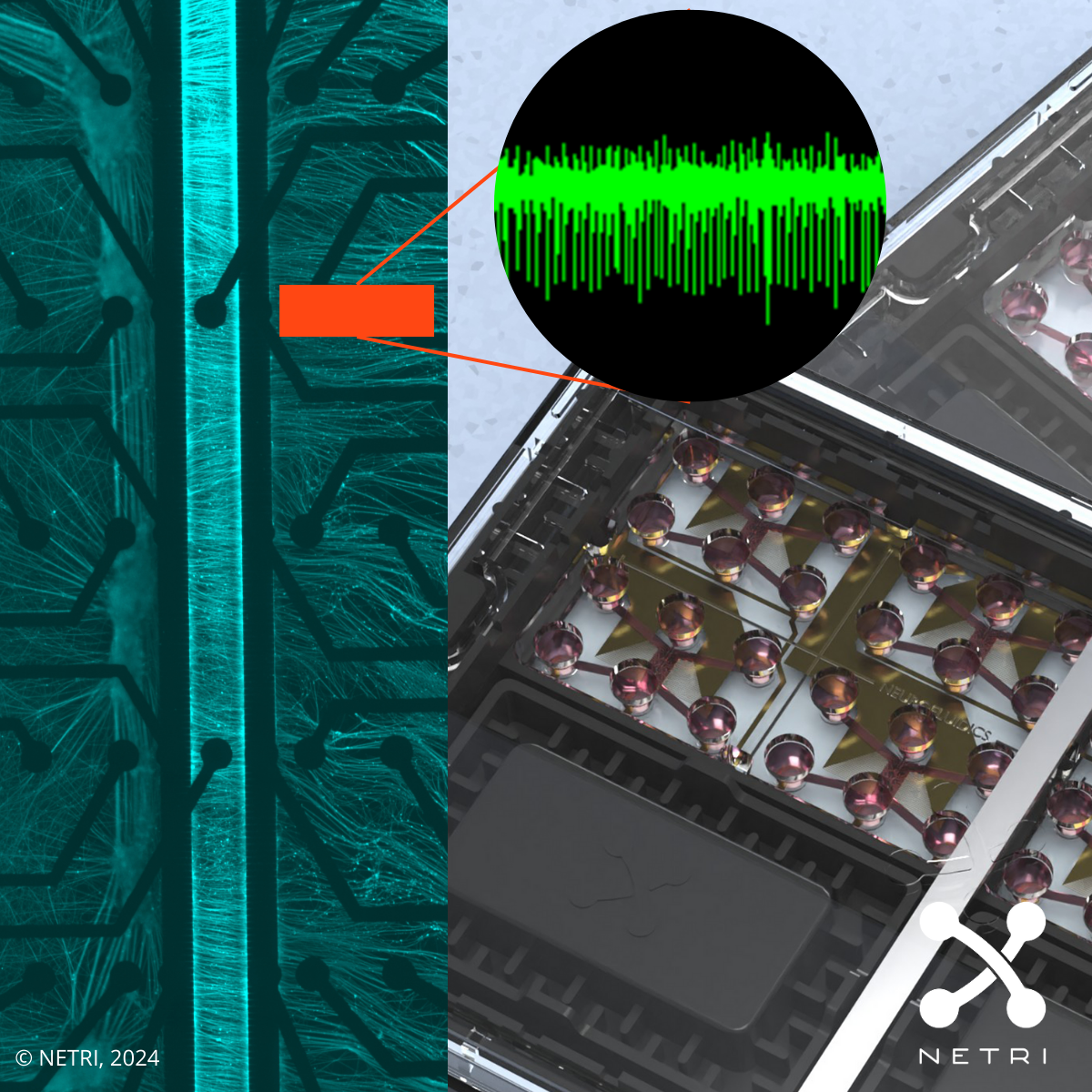Microfluidics is both the science of manipulating fluids at the micrometer scale, and the technology of manufacturing miniaturized devices containing chambers and tunnels through which fluids and cells can either flow or be confined. Combined with the appropriate cell types, these devices can be used to recapitulate human biology in vitro — and with the integration of MEA technology, are opening new avenues for biological research and therapeutic discovery.
>> What are organ-on-a-chips?
>> Advantages of neuro-organs-on-a-chip
>> Example applications
>> Maestro-compatible microfluidic device options

What are organs-on-chips?
Organs-on-chips (OoCs), also known as microphysiological systems (MPS) or “tissue chips,” are microfluidic devices containing living cells aimed at recapitulating the functions of organs. OoCs enable precise control of the cellular microenvironment to recreate tissue specific functions.
OoCs are used to predict the efficacy of a new treatment and accelerate pre-clinical trials while limiting animal testing. Today, the organs-on-chips market is mainly segmented by organ, giving rise to lungs-on-chip, heart-on-chip, liver-on-chip, brain-on-chip, etc.
The main challenges faced by OoCs is to increase the relevance (and complexity) of the models they represent while maintaining high throughput capability to meet the needs of the biotech industry. To address this challenge, NETRI is focusing on neuroscience and developing neuro-organs-on-chips that:
- >> Recreate human physiological neuronal connections in vitro
- >> Meet screening throughput needs (following standard ANSI format)
- >> Integrate into standard workflows and equipment
Advantages of neuro-organs-on-chips
The NETRI NeuroFluidics™ MEA line achieves the fusion of electrophysiology and microfluidics. In collaboration with Axion BioSystems, NETRI has developed MEA-capable high-throughput compartmentalized microfluidic devices.
Neuronal cell bodies are primarily located in the brain and spinal cord, connecting to other cells (skin, neurons, muscle, etc.) by their axonal projections. Using the compartmentalization of microfluidic devices allows researchers to study neural innervation and interaction with different cell types.

The creation of this advanced co-technology will enable neuroscientists to
- >> Create complex, functional in vitro neural models that recapitulate physiologically relevant compartments
- >> Selectively stimulate (compound or electrical) one population to study the cross-functional influence of connected cell populations
- >> Isolate and target synapse activity to establish relevant electrophysiological biomarkers
Example Applications
Innervated skin
Sensitive skin, aging, psoriasis, and eczema — are pathologies involving both the skin and neurons. Studying the relationship between neurons and epithelium can lead to new therapeutic and cosmetic developments.
Pain
Sensory nerves detect tissue damage through specific receptors (nociceptors). Microfluidic compartmentalization allows researchers to selectively stimulate the axonal projections.
Alzheimer's Disease
Alzheimer’s (AD) is a type of dementia that affects memory, thinking, and behavior, and is caused by degeneration of hippocampal and cortical neurons. Study their interactions and mechanisms of disease like aggregation of Aβ42.
Maestro-compatible microfluidic device options
NETRI’s NeoBento™ MEA has a custom Axion MEA layer with up to 48 electrodes per chamber. It is composed of an ANSI-compliant 96-well NeoBento Frame and Lid with one of three NeuroFluidics™ microfluidic chips options with integrated Axion MEA technology:
- >> DuaLink MEA for 2 isolated cultures connected via axons
- >> DuaLink Shift MEA for 2 isolated cultures connected via axons (with synapses located in channel 2)
- >> TriaLink MEA for 3 isolated cultures connected via axons
The NeuroFluidics MEA layouts are compatible with Axis Navigator, which can also be connected to the NETRI-developed utility software, UpLink.
